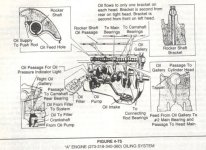My friend and I had a debate. I say one should remove all spark plugs and then check compression on each cylinder. He says no, one should leave all plugs in except of course the one you are checking. Who is right?
Second question. Can you check compression on one side of the engine after you have removed the intake manifold and head from the other?
Lottanerv
1981 Trojan F32
Second question. Can you check compression on one side of the engine after you have removed the intake manifold and head from the other?
Lottanerv
1981 Trojan F32


